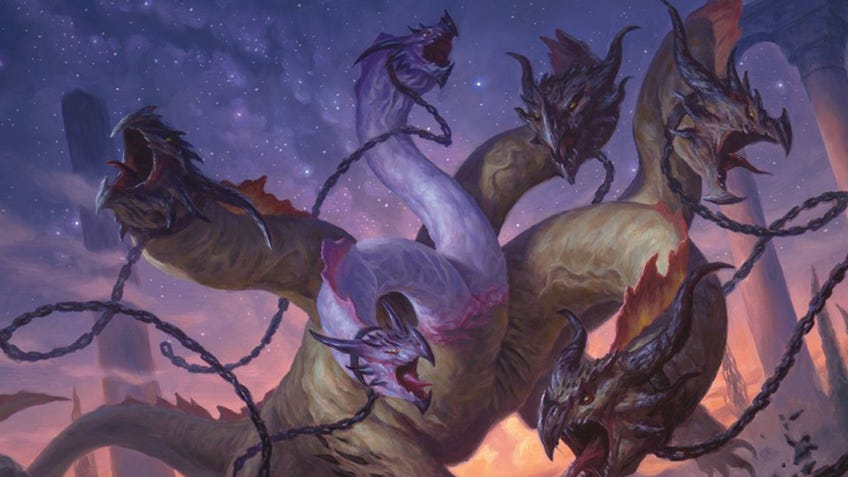What do the different Magic: The Gathering mana colours mean?
Don’t be left feeling Blue or seeing Red with our guide to MTG’s five mana colours.
When you're learning how to play Magic: The Gathering, one of the most intimidating choices can be what colour deck to choose, whether you've opted to learn how to a build a MTG deck or are playing around with combinations online via Magic: The Gathering Arena.
The popular fantasy trading card game Magic: The Gathering mana colours follow a five-pronged colour wheel, with shades of White, Blue, Black, Red and Green.
Each colour represents a different type of land, which is the energy required to power all your units. You'll lay one land down each turn as standard, providing you have them in your hand.
Each mana colour also matches a broad play style and can be adapted into a Magic: The Gathering deck type and comprises very different creatures, spells and planeswalkers. Colours can be smashed together to create new themes entirely. For example, mono-red cards are agressive on their own, but then can be combined with white cards for control spells and healing.
In addition, the different colours all exemplify different philosophies. Every Magic: The Gathering theme colour has its own personality, and a play style it is attuned to. If you want to win at the trading card game, you'll need to work those mana colours to your advantage.
Which Magic: The Gathering colour are you?
When you start playing MTG, it’s best to pick one colour to stick to. It makes building your first deck a lot easier.
However, as you progress, you can mix in other elements to bulk your deck up - and take your opponents by surprise. You’ll find some mana colours match really well together.
If you’re a beginner though, aesthetics and mechanics are the most important things to consider. New card set expansion MTG Theros: Beyond Death also has some fantastic creatures and spells across all the colours.
So whether you’re drawn to dragons, sea-serpents or abominations, it’s time to explore which of the five lands is best for you - and what the different colours in Magic: The Gathering actually mean.
Red mana colour
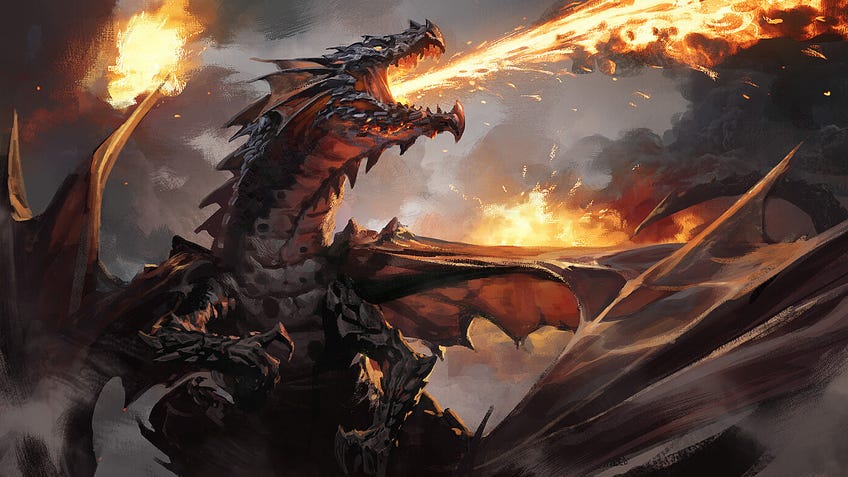
Red draws from the fiery heart of emotion. The theme where you draw first and think later. Its lands are towering peaks and rugged plains.
As a Magic: The Gathering deck, it features all the traditional fantasy elements: dragons, goblins, ogres and er, minotaur pirates. Red spells, in particular, are super destructive: raining fire and stone on your enemies, or annihilating their mana. Its planeswalkers are pyromancers, like Chandra and Jaya Ballard.
These cards are reckless and super damage-heavy. Many Red creatures have ‘haste’, letting them hit first. Red cards are perfect for going on the offensive and wrecking the battlefield.
From a more philosophical perspective, some see this as the colour of chaos or heightened emotions.
The impulsive protagonist from the Disney film Aladdin is a good example of someone driven by red: he has no idea where he’s going to end up.
Or the bloodthirsty fighter Kratos, protagonist from the God of War series of video games. He is driven almost completely by fury and fight.
The red theme is ideal for players who like big, bloody wins. Those folks who want to destroy it all with fire. Literally.
White mana colour

White in Magic: The Gathering is about order and structure. Its lands are vast, green plains sitting beneath a bright blue sky. Although many might dub this the generic ‘good’ colour, it’s actually more lawful then it is morally ‘good’. There is still potential for great evil in White.
Healing spells and protection make up a lot of the action in a White MTG deck.
There is also plenty of divine vengeance to bestow here: the White theme features a lot of biblical-style wrecking spells.
Player-wise, it can be a very cunning deck, full of ways to screw over your opponent when they least expect. It’s good for schemers and planners.
Interesting monsters to deploy include the Sphinx, unicorns and horrifying bird people. Not to mention, a vast parade of vengeful angels. Its abundance of flying units make White particularly lethal.
If White was a person from pop culture, they’d be Captain Jean-Luc Picard or King Arthur of the old legends – something that MTG’s recent Throne of Eldraine set draws from heavily alongside traditional fairytales.
Blue mana colour
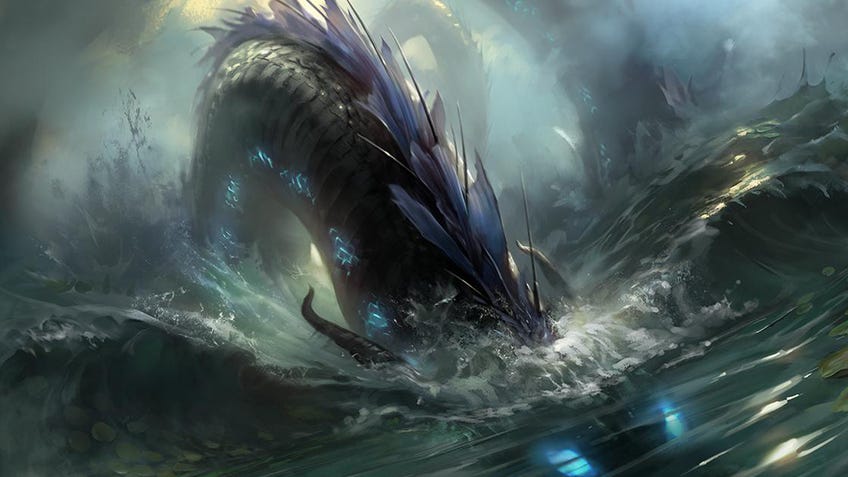
Swirling whirlpools and hazy islands are the lands of Blue in MTG. It is curiosity, science and progress, but also the distance and inhumanity that can be bred from these things. If it was a person, it’d be a wise mage: watching the battlefield from a high tower.
This theme also has a lot of spells that manipulate the environment, and a plethora of small, low-mana units that stack up. The colour Blue features lots of flying units too, and an array of low-cost spells that can take nasty swipes at the other player.
Its armies include water-based fairies, powerful wizards and deep-sea monsters. Sinister beasties like sirens and kraken also hail from Blue.
Outside of Magic: The Gathering’s Blue planeswalkers, Spock from Star Trek is about as blue as it gets. Plus characters like the wizard Merlin from Arthurian legend. Essentially, folks pushing the boundaries of what we know, and the great good and evil that comes from that.
Black mana colour
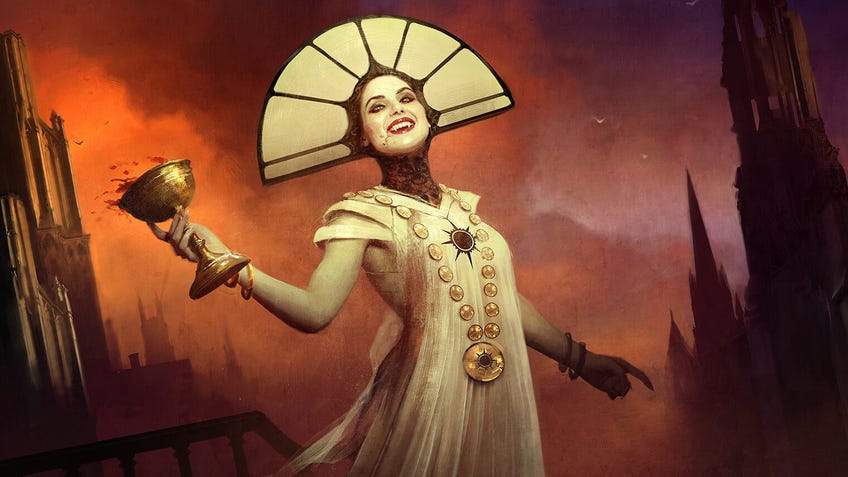
As you’d expect, Black in Magic: The Gathering is the colour of death. Its lands are twilight swamps and strange, horrible dark caverns.
Black magic is ever so powerful but always has a cost. You might lose your mind or your creatures. That said, it also lets you summon zombie armies, demons and unknowable abominations. A black card in the Throne of Eldraine expansion literally lets you bake creatures into pies.
Although the temptation is to dub this element ‘evil’ is high - just like White - it’s actually amoral. Fast-quipping mercenary Han Solo from Star Wars is a good example of MTG’s Black element in pop culture. The Lich Kings of Dungeons & Dragons, too, are about as Black as it comes.
Really, it’s about ambition. The glorification of the self, and its ascent. Add a bit of Red’s unpredictability to the Black mix, and you’ve got yourself a character like the Joker from the Batman series. Chaos steeled.
This is best for folks that enjoy spooky monsters and necromancy. At its core, the black theme is about sacrifice and shaping the table to your whims. It’s got a lot of variety, and is, of course, a definite for anyone gothically inclined.
Green mana colour
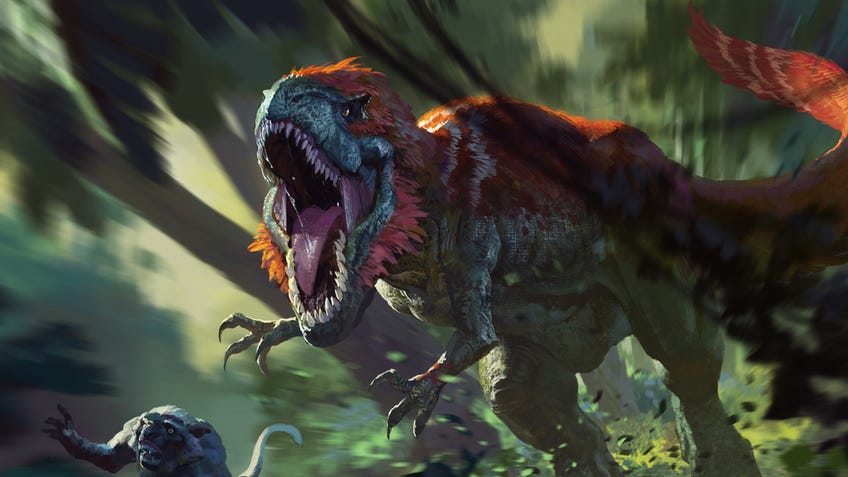
Green MTG cards combine a strange mix of growth (plenty of cards get additional health counters or are self-healing) and brute force. The lands comprise deep dark forests and wiry bramble patches, and the colour’s values veer away from knowledge into something much more ancient: wisdom, and instinct.
Think Yoda from Star Wars. Or Daryl Dixon from The Walking Dead - who is basically the party’s ranger, adapted stoically to the new world. It’s not about nature itself, so much as an understanding of being part of something vaster.
Green monsters are among the biggest Magic: The Gathering has to offer, and this colour includes everything from dinosaurs to gigantic wyrms. They often grow to monstrous proportions or unite with other cards to dominate the battlefield.
Take the Hydra monster, for example, which begins pretty squishy, but rapidly gains more health each time it attacks.
Green is for players who are patient, and who enjoy giant – and frankly quite psychedelic – monsters.
So, you now know what the colours mean. You can get to either striking out with your own one-colour themed deck, or start combining colours to create a combi-colour deck. Now you've got a grasp of what to expect with the different mana colours, you can learn how to a build a MTG deck.
